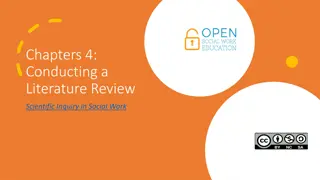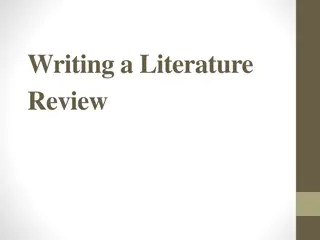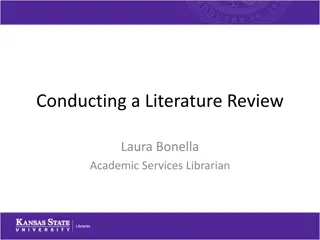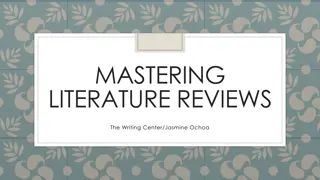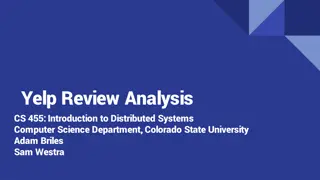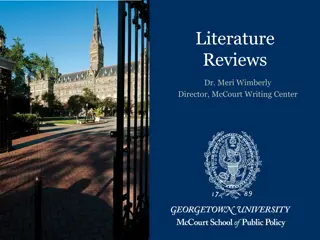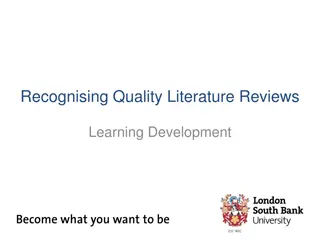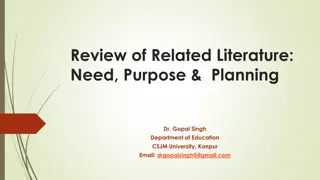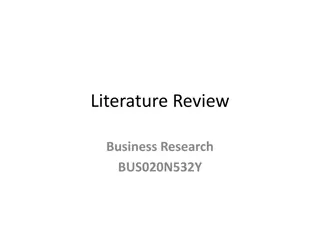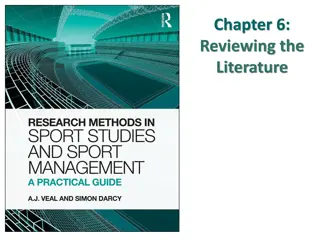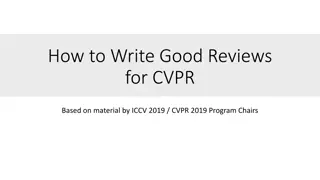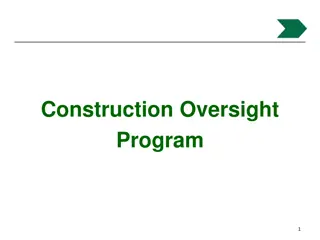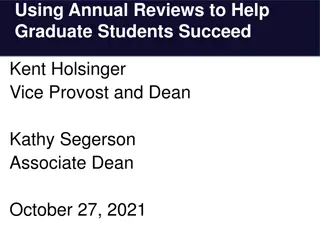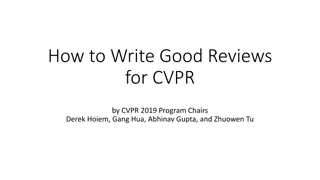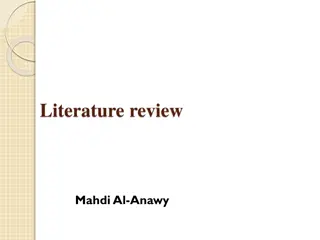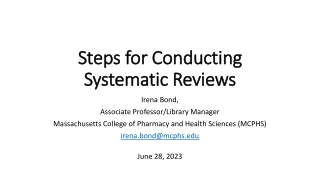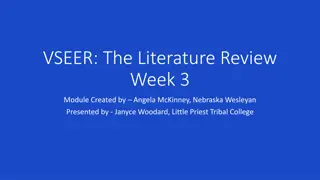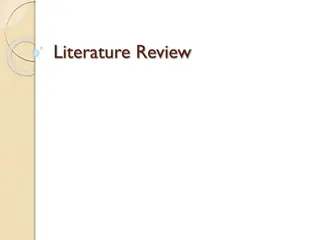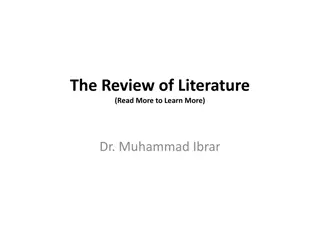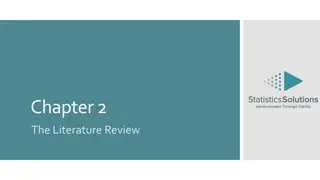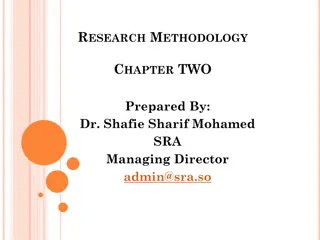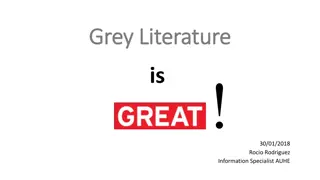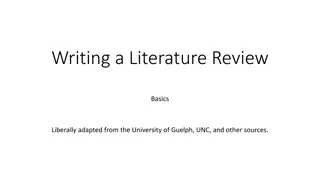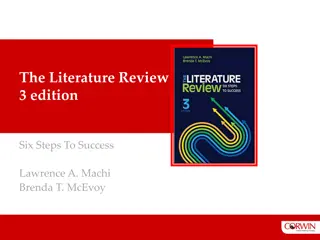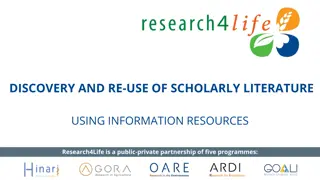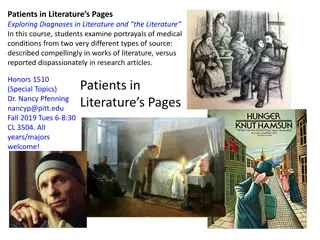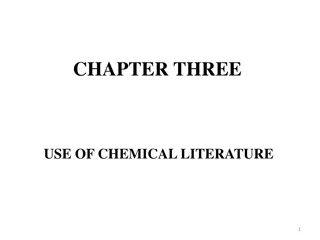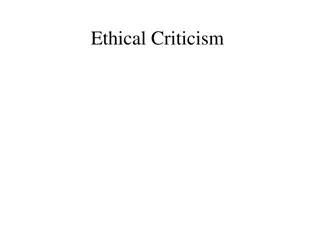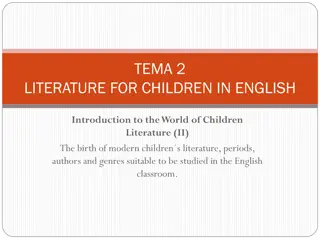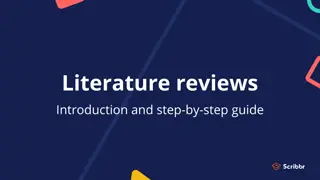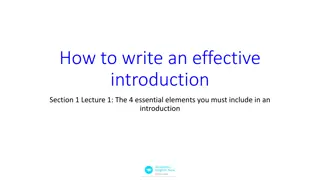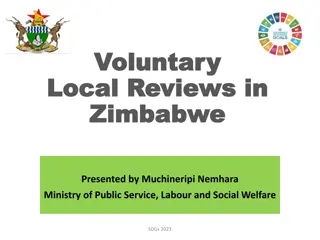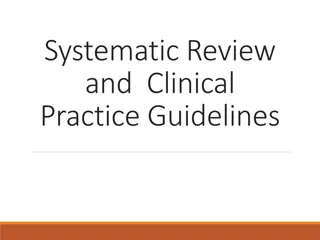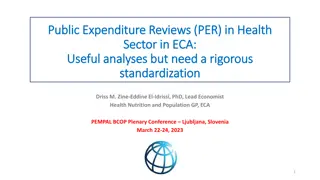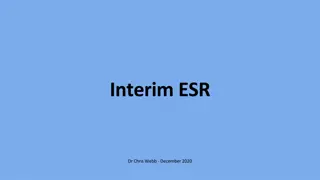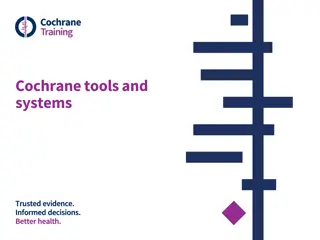Mastering Literature Reviews: A Comprehensive Guide
Understanding the essence of literature reviews is crucial for academic success. A literature review situates your research within existing knowledge, defines key concepts, explains methodology, and identifies research gaps. It is not an annotated bibliography but a critical evaluation and synthesis of published works. Knowing how to start, search for sources, and structure your review is essential for a successful academic journey.
Download Presentation

Please find below an Image/Link to download the presentation.
The content on the website is provided AS IS for your information and personal use only. It may not be sold, licensed, or shared on other websites without obtaining consent from the author. Download presentation by click this link. If you encounter any issues during the download, it is possible that the publisher has removed the file from their server.
E N D
Presentation Transcript
Literature Reviews and You! Dr. Michael Agnew MacPherson Institute February 7, 2017
What brings you here today? Before we begin, let s take a moment to share with one another A little about yourself (program, year, where you re from!) The project you re working on as a student partner What you hope to get out of the workshop today/how it might be relevant to your project
What is a literature review? Surveying the literature is necessary because scholarship is cumulative Your own original research contribution must be situated within the context of what has already been published In short, a literature review considers the state and progress of existing literature on a given topic by organizing, integrating, and critically evaluating published books and articles
A literature review should Place your study within the context of other work Inform your reader about the theories your research is based on Define terminology and concepts drawn upon in your study Explain the basis of your chosen research methodology Establish the need for your research, identifying gaps/limitations
A literature review should not A literature review is not the same as an annotated bibliography A literature review can build on the work done in an annotated bibliography, but includes a critical analysis of the relationship among different works, and relates the research to your own work
Reviewing the literature Where do I start? Any literature review begins with a comprehensive search of existing scholarly publications Start with broad descriptors (ex: online assessment), and then begin to narrow your focus to your research questions (ex: academic integrity online assessment) The bibliographies of the articles you find will be helpful in pointing you to other sources, especially classics in the field and those most cited
Reviewing the literature Where do I start? There are several citation management systems that can be used to store and organize your research (Mendeley, Zotero) An effective literature search: Reduces time spent looking for information Maximizes quality and appropriateness of results Helps clarify the scope of your topic Helps define and refine the research questions Helps identify experts in the field Provides examples of successful methodologies
Reviewing the literature Reading effectively As a starting point, focus on the general purpose and content of each article, zeroing in on the abstract, introduction, first few paragraphs, and conclusion Develop a note-taking system (note cards, charts, Excel spreadsheets, the note-taking function in Mendeley, etc.) Group the publications into categories and subcategories, based on general theme, methodology, population, etc., and order chronologically
Reviewing the literature Reading effectively Identify key definitions/concepts that seem important to the field, and differences in how scholars use them Note the strengths and the limitations of the study, the purpose of the review is not only to summarize but critically evaluate the lit. Identify major trends or patterns, connections and gaps in the literature Know when you ve reached literature saturation and begin writing your review
Reviewing the literature Summarizing and organizing your review Using a table can help to organize and most importantly synthesize your review findings This is often called a synthesis matrix , which can take many forms Most matrixes will organize the literature chronologically, and according to dominant themes and concepts, research methods, and will include a summary of the results
Reviewing the literature Synthesis Matrix
Reviewing the literature Synthesis Matrix
Reviewing the literature Synthesis Matrix
Reviewing the literature Preparing to write your review Create a topic outline that traces your synthesis of the literature Within each topic heading, note differences among the studies, how they build on one another, gaps in the field Identify the theories, quotes, key definitions from your review you plan to incorporate into the review Plan to discuss conclusions/implications of your review, and directions for future research
Reviewing the literature Tips for writing the review Identify the broad problem area, and why the topic being reviewed is important, timely Indicate why certain studies are important, and if they are considered classic or landmark in the field say so Avoid long lists of nonspecific references Highlight the chronological development of the field of literature Be consistent in your citation
Reviewing the literature Examples When looking at the two examples of lit. reviews, discuss the following questions: How are they similar? How are they different? How do they organize their sources? What is emphasized? How are the sources synthesized, and what level of analysis is given to them?
Thanks for Coming! Contact: agnewmj@mcmaster.ca


